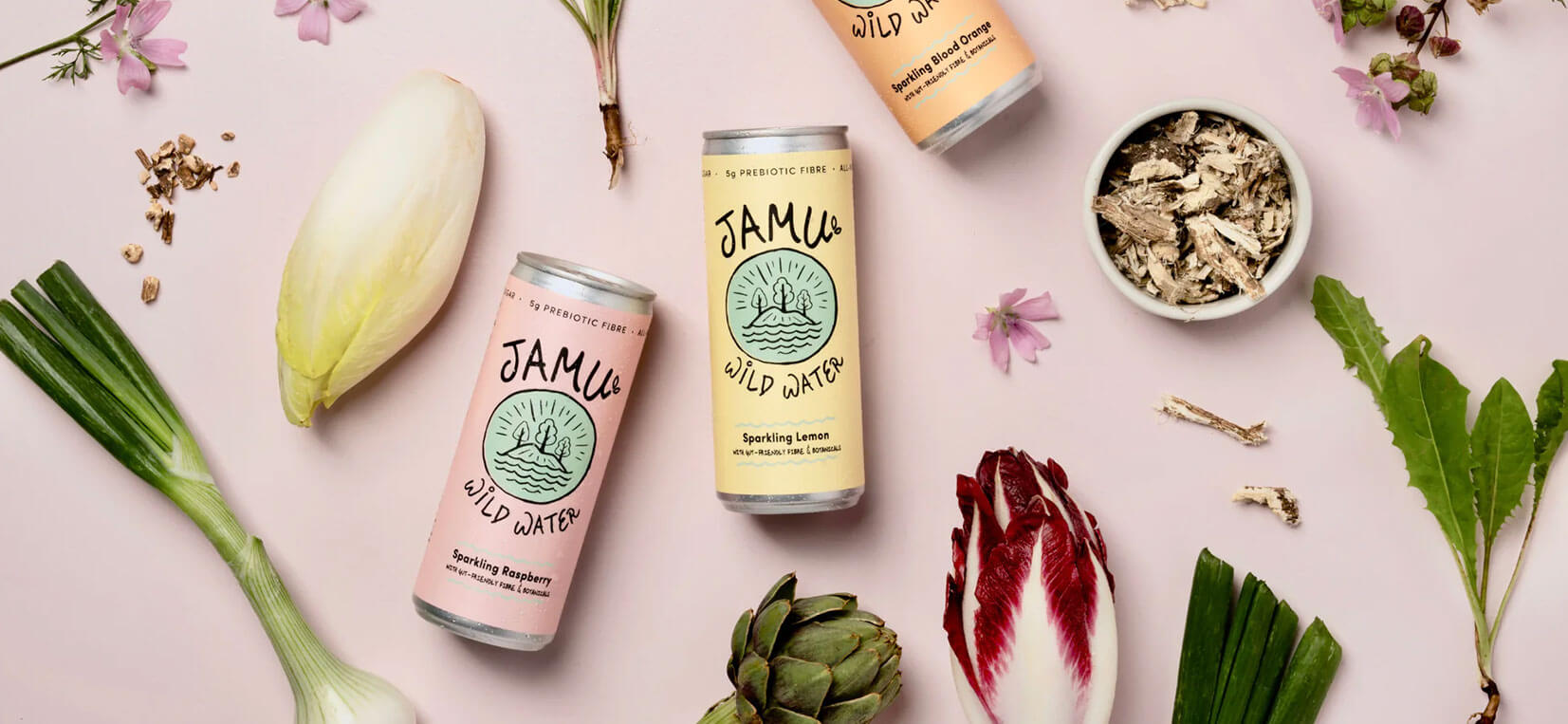Before we delve into the complex world of this crucial carbohydrate and how to introduce more into your diet, it’s time to whip out a calculator and rummage through your cupboards…

Do you know how much fibre is in the food you eat each day? Do you know if you're eating enough?
In the UK it's currently recommended that we include at least 30g of fibre per day in our diet. Yet, on average, a typical UK diet only reaches about 20g...
Fibre is an overlooked but wildly important nutrient that plays a huge role in gut health but also in preventing chronic diseases.
While it's important to be eating enough, adding too much fibre too quickly can cause bloating and gas. Introduce more fibre into your diet slowly, to give yourself and your gut microbiome time to catch up.
So before sneaking extra fibre into your diet, a rummage through the cupboards and a quick read of your breakfast cereal helps you know where you’re starting from and if you could benefit from adding more dietary fibre into your life.
What is dietary fibre?
The term dietary fibre usually encompasses two familiar fibre categories, soluble and insoluble fibre.
Both types of fibre are a vital part of our daily diet. They’re often found together in most plant-based foods but in different quantities.
We don’t digest them ourselves, but they each play a unique role as they move through our gut…

Related Read | How prebiotics and fibre support your immune system
Soluble fibre dissolves in water to form a gel-like substance that helps us feel fuller for longer. This slows down digestion and can help to lower cholesterol, improve nutrient absorption and improve our blood sugar regulation.
Insoluble fibre doesn’t dissolve in water, which means it helps to bulk out our stools and relieve or prevent constipation.
But there’s a relatively new, and increasingly important addition to the dietary fibre collection called ‘prebiotic fibre’.
Prebiotic fibre helps to nourish the good bacteria that’s already in the gut, boosting their populations which brings a whole host of health benefits.
Related Read | Why is prebiotic fibre so good for you?
Is prebiotic fibre soluble or insoluble?
Most prebiotic fibre is considered to be part of the soluble fibre category of dietary fibre. Prebiotics are types of fibres, but not all fibres are prebiotic…
8 easy ways to sneak ALL types of fibre into your day
So if you're not quite hitting your daily 30g target... Here are several easy ways to boost your prebiotic, soluble and insoluble fibre intake each day, with a few small habit changes…
1. Start the day right
There are lots of high-fibre breakfast cereals out there that can help you start the day off with a big lead on your daily fibre target.
Look for cereals that include ‘bran’, ‘fibre’ and whole grains. But watch out for the sugar content too… some brands pair their high-fibre content with an over generous dose of sugar.
A simple bowl of oats is always a good go-to breakfast to boost your dietary fibre intake for the day.
Boosts: Soluble and/or insoluble fibre

2. Eat more high-fibre fruit and veg
We all know that we should be eating more fruit and veg for a boost of vitamins… but we can also rely on them for fibre too!
Make sure you’re including lots of high-fibre veggies and fruits in your snacks and recipes.
High-fibre fruit and veg include…
- Avocado
- Raspberries
- Blackberries
- Jerusalem artichoke
- Brussels sprouts
- Kale
- Pears
Boosts: Soluble, insoluble and prebiotic fibre, depending on the veggie.

3. Wholesome whole grains
Switching up your store cupboard foods like pasta, cereals and snacks to include more wholewheat options is a simple swap that can boost dietary fibre.
And if you bake often, try switching out white flour for a wholewheat option too. Wholewheat flour still contains all of the fibrous goodness naturally found in wheat grains. Whereas white flour has these filtered away.
Boosts: insoluble fibre

4. Upgrade your snacks
When the 11 o’clock snack attack hits, make sure it includes fibre. Having a handful of nuts and/or seeds is an easy way to boost your insoluble fibre intake for the day.
Boosts: Insoluble fibre.

5. Fruit and vegetable peel!
If you often peel your potatoes, carrots, courgettes or even peaches! Consider leaving the skin on…
The skin on fruits and vegetables contains an additional boost of insoluble fibre.
So give those potatoes (and other suitable veggies!) a good scrub to remove any soil, and leave the skin on!
Boosts: insoluble fibre.

6. Drink your fibre!
On days when you need a quick fibre boost… you could try — drinking it!
Every can of Jamu Wild Water contains 5g of prebiotic fibre that can boost and support the probiotics in your gut.
Boosts: Prebiotic fibre!

Related Read | Understanding the Jamu Wild Water nutritional label
7. Swap in legumes!
Legumes are an amazing source of insoluble fibre. They can easily be added into endless recipes from soups and salads to burritos and brownies! (Black bean brownies by the way!)
Some of the most high-fibre legumes include…
- Lentils
- Kidney beans
- Black beans
- Chickpeas
Boosts: Insoluble fibre!

8. Garnish with seeds!
Keep a mix of seeds on hand in your store cupboard so you can easily add them as a garnish to meals. It adds an artful touch, but also helps you add more dietary fibre into your dishes!
You could add chia seeds to breakfasts and desserts, add flax seeds to a yoghurt, sprinkle sesame seeds over a stir fry or add sunflower or pumpkin seeds to a salad.
Boosts: insoluble fibre.


